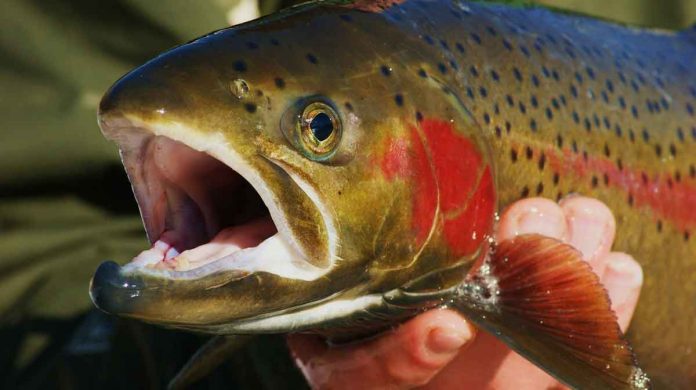Oregon State University researchers have showed that Hatchery-raised steelhead trout have offspring who are good at gaining size under hatchery conditions. But they do not survive as well in streams as steelhead whose parents are wild fish. The research paper was published in PLOS One.
This research suggests that it is possible to change rearing methods to produce hatchery fish which are more like wild steelhead. This can help them survive better. Scientists have also raised concerns about its mixing with wild populations.
Steelhead hatcheries provide fish for harvest. It supplements wild stocks of an iconic species which is culturally and recreationally significant.
Steelheads are anadromous like salmon. This means they travel to the ocean as “smolts”. They return to their natal streams to spawn. Hatcheries raise eggs and juvenile fish for about a year. Then they release them to go to sea.
Hatchery fish make better brood stock than wild fish. They produce more fish that return for harvest. Hatchery fish produce fewer returning offspring when both spawn in the wild.
This happens because hatcheries are inadvertently favoring genes which promote growth in the hatchery environment to survive in the wild.
Scientists suggested there may be a way to modify hatchery conditions. So, they don’t accidentally “select” for traits which are valuable to juveniles in a fish-raising environment. Selection refers to the process of beneficial genes being passed on to improve a species’ chance of survival in a specific environment, in evolutionary biology.
The new hypothesis genes favored the hatchery are disfavored in the wild.
Scientists looked at multiple full-sibling families of steelhead. They were spawned either by two wild parents or two first-generation hatchery-raised parents.
Salmon, trout and steelhead of hatcheries regularly have lower “fitness”. The number of adult offspring that survive to return from the sea than wild fish when both spawn in the wild.
Scientists also looked at whether reducing the fat content of trout feed can make it more like a wild diet. It might reduce the inadvertent selection in the hatchery. But scientists found no evidence that particular modification would have an effect. Scientists also testing other changes to standard hatchery rearing methods which can be used to make hatchery fish more like wild fish.

